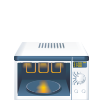Diabetic issues is a chronic condition that impacts countless people worldwide. It happens when the body is unable to appropriately control blood sugar degrees, causing high levels of sugar in the blood. If left neglected, diabetic issues can have significant health consequences. Therefore, it is critical to diagnose diabetes early to ensure that proper therapy and administration strategies can be implemented. In this short article, we will certainly explore the different analysis methods utilized to determine diabetes and give you with a comprehensive overview to recognizing this problem.
Signs of Diabetic issues
Diabetic issues can show up via a series of signs and symptoms, although some people may be asymptomatic. Common signs and symptoms of diabetic issues include:
- Constant urination
- Too much thirst
- Unusual weight loss
- Fatigue and weakness
- Blurred vision
- Sluggish recovery of wounds
- Reoccurring infections
- Prickling or feeling numb in the hands or feet
If you are experiencing any of these signs, uromexil forte kapszula it is essential to consult a healthcare professional for additional analysis and screening.
Diagnosing Diabetes mellitus
There are numerous methods utilized to detect diabetic issues, including:
Fasting Plasma Glucose (FPG) Examination: This test determines blood sugar levels after not eating for at the very least 8 hours. A fasting plasma glucose level of 126 milligrams per deciliter (mg/dL) or greater on 2 separate events shows diabetes mellitus.
Dental Sugar Resistance Examination (OGTT): Throughout this test, blood sugar levels are measured after fasting, and after that again 2 hours after eating a glucose-rich beverage. A blood glucose level of 200 mg/dL or greater after 2 hours confirms diabetes mellitus.
Hemoglobin A1C Examination: This examination determines average blood glucose levels over the previous 2-3 months. An A1C degree of 6.5% or higher shows diabetes mellitus.
Random Plasma Glucose Test: This examination measures blood sugar degrees at whenever of the day, regardless of when you last ate. A random plasma glucose level of 200 mg/dL or higher, along with signs and symptoms of diabetic issues, recommends the presence of the problem.
Kind 1 versus Type 2 Diabetes
It is very important to note that there are different types of diabetes mellitus, with kind 1 and kind 2 being the most typical.
Type 1 Diabetic issues: Type 1 diabetes is keramin cena an autoimmune disease where the body’s body immune system wrongly assaults and damages the insulin-producing cells in the pancreatic. It is generally detected in youngsters and young adults. The signs of type 1 diabetes mellitus can develop quickly and consist of extreme thirst, regular urination, inexplicable fat burning, and severe tiredness.
Kind 2 Diabetic issues: Kind 2 diabetes mellitus is a metabolic disorder that takes place when the body comes to be immune to the results of insulin or falls short to generate adequate insulin to maintain normal blood sugar level levels. This type of diabetes is much more usual in grownups, particularly those that are overweight or overweight. The symptoms of kind 2 diabetes mellitus may develop gradually and include increased thirst, constant peeing, fatigue, and obscured vision.
Gestational Diabetes mellitus
Gestational diabetic issues is a sort of diabetes that happens while pregnant. It impacts about 2-10% of pregnant ladies. While a lot of instances resolve after giving birth, females that have actually had gestational diabetes mellitus go to a boosted danger of establishing kind 2 diabetes later on in life. Evaluating for gestational diabetic issues usually happens in between 24-28 weeks of pregnancy and includes a dental glucose tolerance examination.
- Ladies with a raised risk of gestational diabetic issues, such as those with a family history of diabetes or that are overweight, may be evaluated earlier in maternity.
- If gestational diabetes mellitus is diagnosed, blood sugar level surveillance and way of life modifications, such as a healthy diet regimen and normal exercise, are suggested to keep blood sugar level levels in check.
Final thought
Diagnosing diabetes is essential for very early intervention and effective management. Regular exams, especially for individuals with risk factors such as excessive weight or a family background of diabetes, can help in identifying the problem at a beginning. It is essential to speak with a healthcare professional if you experience any signs and symptoms or have problems regarding your blood glucose levels. Keep in mind, early discovery and proper monitoring can significantly improve the lifestyle for people dealing with diabetes.
Disclaimer: The info provided in this write-up is for informational objectives just and must not be thought about clinical suggestions. Please speak with a healthcare specialist for tailored advice and medical diagnosis.








